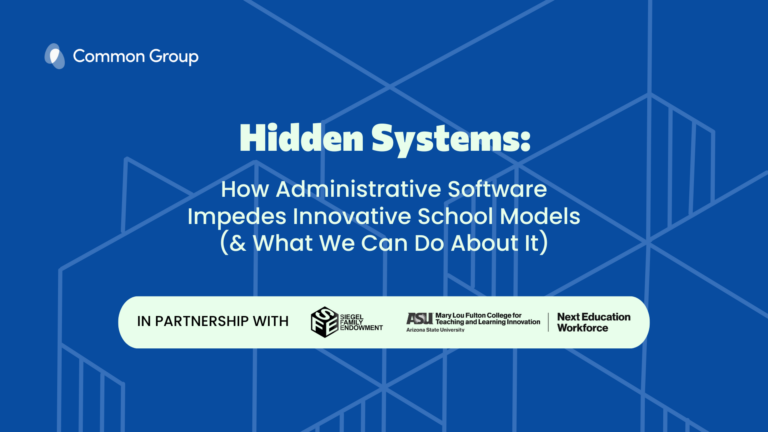How ICA Fund Is Providing Access to Capital for Women, Black, and Latino-Owned Businesses—and Influencing How Financing Works

ICA Fund exists to respond to a concerning reality: People of color, especially women of color, start businesses at higher rates than white people. However, they are constrained by structural inequities and often overlooked by mainstream funders. The result? Communities of color and women have fewer opportunities for wealth creation. ICA Fund addresses this problem by providing coaching, connections, and capital to grow Bay Area businesses. In doing so, it aims to close the gender and racial wealth gaps and effect positive change across the larger economic ecosystem.
We sat down with ICA Fund CEO Allison Kelly to discuss ICA Fund’s model, the ways in which the organization differs from traditional finance institutions, and where ICA’s work is headed in 2023 and beyond.
I’d love to start by hearing more about how you came to this work. What attracted you to finance and to ICA Fund’s unique model?
After college, I went into the Peace Corps in West Africa thinking I wanted to be a human rights lawyer, but came out wanting to use business as a force for social change. Because it really gives people agency to make self determination.
As I stepped into the finance industry, I was part of community development financial institutions that were doing small business lending. I started to see that the racial and gender discrepancies in debt finance perpetuated the inequity. I kept thinking there has to be another way to have finance work so that it can level opportunity. That’s why I came to ICA. We don’t have to use the same standard way of underwriting debt, and we can be a lot more expansive in how we think about financing businesses.
How does that process work at the ICA Fund? Tell us more about your model and why those investments are so important.
People of color and women have historically and systemically been shut out of access to capital and access to capacity building. There are generational policies and practices that have kept people of color and women from being able to acquire and protect assets at the same rate as their white male counterparts.
The reason why our model is so unique, and why it’s so effective, is because at ICA, we identify high-potential small businesses from traditionally overlooked communities and/or underrepresented communities. We build wraparound systems of support to ensure that growing a business and accessing capital are easy things to understand. Growing a business and accessing capital doesn’t need to be mysterious! Our work is all about equipping individuals with the knowledge and the tools that they need to make informed decisions. And because we work with entrepreneurs, it’s centered around growing and sustaining a small business.
Why do you have that focus on small businesses owners as opposed to other types of individuals or groups?
Not only are small business owners the largest job generators in the country, but they are also important placemakers in our communities. There’s a lot of agency in running and growing a small business, and it is a tool of creating and generating wealth—not just for the entrepreneur, but also for their employees.
That’s part of our theory of change: we work with entrepreneurs who are interested and committed to distributing the wealth that gets created at their companies with their employees. We know that just getting a paycheck is not enough to truly accumulate and have enough economic resilience to withstand economic shocks, whether they be unanticipated medical bills or catastrophic events, like a pandemic.
What is your process for selecting the entrepreneurs and the small businesses that will be part of your cohorts?
I love to say that we trade on the currency of trust. We’re only going to have the right people come to us if they trust that we’re going to do what we say and say what we do. That takes time, and that takes relationship building.
How do we find these founders? There’s a lot of word of mouth from people that have gone through our programs already. We also have a very intentional pipeline development strategy, and we have community partners throughout the Bay Area that we pay referral fees for recommending businesses that get selected and participate in our program. We also use social media. It’s multi-faceted.
Once they come to us, the entrepreneurs go through an intensive application process. Our team also does a rigorous assessment on the backend with each cohort. They’re hand-selected to make sure that the business challenges will be universally understood and relevant to the other members of the cohort.
What are the attributes that you are typically looking for in entrepreneurs?
For our accelerator cohorts, we look for individuals that have enough capacity within their company to step away a bit, so that they can spend time with the cohort. That’s really important. They also need to be at similar growth challenge stages. In order to work with ICA, you have to have a predisposition to our mission. We also look at the composition of the cohort and ensure that there are no direct competitors within the cohort.
For our capital investments, nearly all of the companies that we invest in come through our programs. That allows us to get to know the entrepreneur, allows us to understand how they think, how they make decisions around their business. We get to know them. Then we do a really detailed and rigorous risk assessment, looking at the growth trajectory of the business, industry, their sales channels, their profit margins, their business plans—all of the parts that go into running a business.
How do those attributes differ from traditional finance institutions? How is ICA Fund’s approach different?
Black and Latino and Latina entrepreneurs have often been told “no” by banks. My job is in the financial industry, and finance is an industry that basically tries to assess risk and is in control of the outpouring of money. If you have lower perceived risk, you have access to more money.
What we’re doing at ICA is really challenging the notion of what is the difference between real risk versus perceived risk. What are the perceptions that go into risk assessment, as traditionally looked at by the financial system that has been exclusive to certain people? Things like credit scores, asset ratios, and personal guarantees. Same with our traditional ways of underwriting—it includes risk and includes our credit scores.
However, the processes by which one would “earn” a strong credit score or asset ratio have been racist and sexist historically. For example, women could not get a small business loan without a male co-signer until 1988. So how were women meant to acquire assets and build up our own businesses or get access to the same opportunities for generating wealth as men?
At ICA, we don’t look at credit scores. We don’t have asset ratios. We don’t require personal guarantees. We try to remove the exclusionary components that inhibit access for people of color and women, and focus on other aspects of the entrepreneur, business, and market when making investments.
Could you give us an example of what would change if the financial system did respond to the needs of women and people of color?
For example, what if we created a small business loan product specifically for the needs of women of color? For example, The Wisdom Fund, an innovative investment product that ICA helped create, went through a design thinking process that brought together Black and Latina women entrepreneurs to talk about what a debt product should look like.
What came out over that process, trading on the currency of trust, was that many women felt invaded during the underwriting process. The way that the industry underwrites businesses can be so invasive and the level of vulnerability that it takes to open up your books can be really challenging.
At ICA Fund, we are decoupling all of that and pulling apart what goes into our understanding of how to access credit. It’s not just that we assess risk differently; we also change the power dynamic of capital holder versus entrepreneur. Traditionally, it’s the investors who have all the power in a relationship. But we realize and recognize that we can have all the money in the world, but if we don’t have tenacious, inspiring, resilient entrepreneurs to invest in, our money is just going to sit there and not do anything. This is a joint partnership.
Can you give us an example of how this philosophy and approach works to impact entrepreneurs and small businesses?
James Norman is the CEO of a company called Pilotly, an innovative market research firm. This is James’ sixth entrepreneurial venture — Pilotly has gotten great traction, yet he’s struggled to find investment partners. He’s a Black man. In venture capital, in particular, there is a pattern recognition bias that happens, and it is well-documented. Part of that pattern recognition gets developed because we can build trust in and understand people that have our same lived experience.
When James came to ICA, he was pretty fed up. Our investment team talked through the opportunity with me and I was scared to move forward on underwriting the deal. I didn’t want to be part of this person’s negative story around access to capital. Our team went through the underwriting process and was able to get to a successful outcome, and make the investment.
Are there certain attributes of the business that you look at in order to make a determination of risk and potential?
Traditional finance has become all about scale. What happens in order to get to scale is you have to streamline and standardize, by necessity. When you standardize, by definition, there are going to be people that don’t fit the standard. It doesn’t mean that they’re not worthy of investing in. It just means that they’re not the standard.
I just read this wonderful book, Braiding Sweetgrass, and I got this analogy from it. The author, Robin Wall Kimmerer, describes how colonization impacted the waterways in the United States.When Indigenous peoples stewarded the land, the water flowed through the land through tributaries which would flow into streams, which would feed into rivers, which would feed into oceans. After colonization, the U.S. introduced industrial agriculture and industrialized livestock production. As a result, the tributaries all got redirected into these main streams. The main streams then fed into the rivers and into the oceans. So we lost those tributaries delivering water to a broader part of the land. That wrecked biodiversity and wrecked natural ecosystems that were thriving.
Reading this, I realized the same thing has happened in finance. Everything has become mainstreamed, but organizations like ICA are the tributaries that feed and nourish part of our biodiversity that we need to have a fully vibrant ecosystem. We are nourishing part of our communities and our small business communities that don’t have access to the main stream, but are critically important to the sustainability of our economy.
How do you hope to continue that work in the future? Are you looking to create a wider network of those tributaries or scale in other ways?
I want ICA to demonstrate a reason to have our financial system be expanded so that we’re not just living in a standard mainstream, but that we have a fully supportive toolbox to meet the needs of individuals that are all different.
To be clear—you have to be a profitable business to be a part of ICA’s cohort. But we’re thinking about growth a little differently than most financial institutions. We’re not aiming for a specific number for a return on investment. We’re looking for what’s enough of a return on an investment? And who is going to benefit from that return?
Venture capitalists traditionally are often looking for triple digit returns by just one percent of their portfolio being really successful. At ICA, we’re looking at 90 percent of our portfolio thriving and getting to double digit returns. If we’re getting double digit returns and enough wealth and value are created in that business that they can then share some of that wealth with employees through stock ownership or warrants or dividends or something above and beyond paychecks, then we are successful.
Are you thinking of expanding? What is the ideal growth model for ICA Fund?
A lot of how we’ve thought about growth has been ‘expand, expand, expand.’ But, really, when we dissect it all and pull it apart, what we really want to do is influence. We want to influence policy. We want to influence other organizations. We created the ICA Impact Note, a new financial product this year that is open source to other organizations. We want them to adopt it freely and replicate it in their communities. We’re looking at ways of measuring that influence, that will really get at the catalytic nature of our work.
One of the things that we’re doing in 2023 is investing in market-sizing research. We want to be sure that ICA is the right size for the community that we’re supporting. Do we need to get bigger? Do we need to think about our growth differently? That research will also identify the attributes that have made our model successful in the Bay Area. It will help us understand whether there are ways to go deeper into the nine counties that we’re serving already, or what the attributes are of other communities across the country to make our model successful.
We also have formal, ongoing conversations with partners in Detroit and New York. What we’ve learned in those conversations is that we can’t control their context, or their timing or their readiness. What we can do is share everything we can, and make ourselves available, and be encouraging and connect them to funders, which we’ve done. But they need to be ready and they need to be driving the process. It’s the same thing with entrepreneurs.
We’ve seen so many organizations grow nationally. We would rather be collaborative and help support and lift up other communities and share what we’ve learned. They can take it and adapt it to their communities, and have it get there under their leadership most appropriately.
####
Allison Kelly is Chief Executive Officer at ICA Fund. She has deep expertise in small business advising, lending, and economic development. She is passionately committed to equality and community empowerment.
Read more about ICA Fund here.





